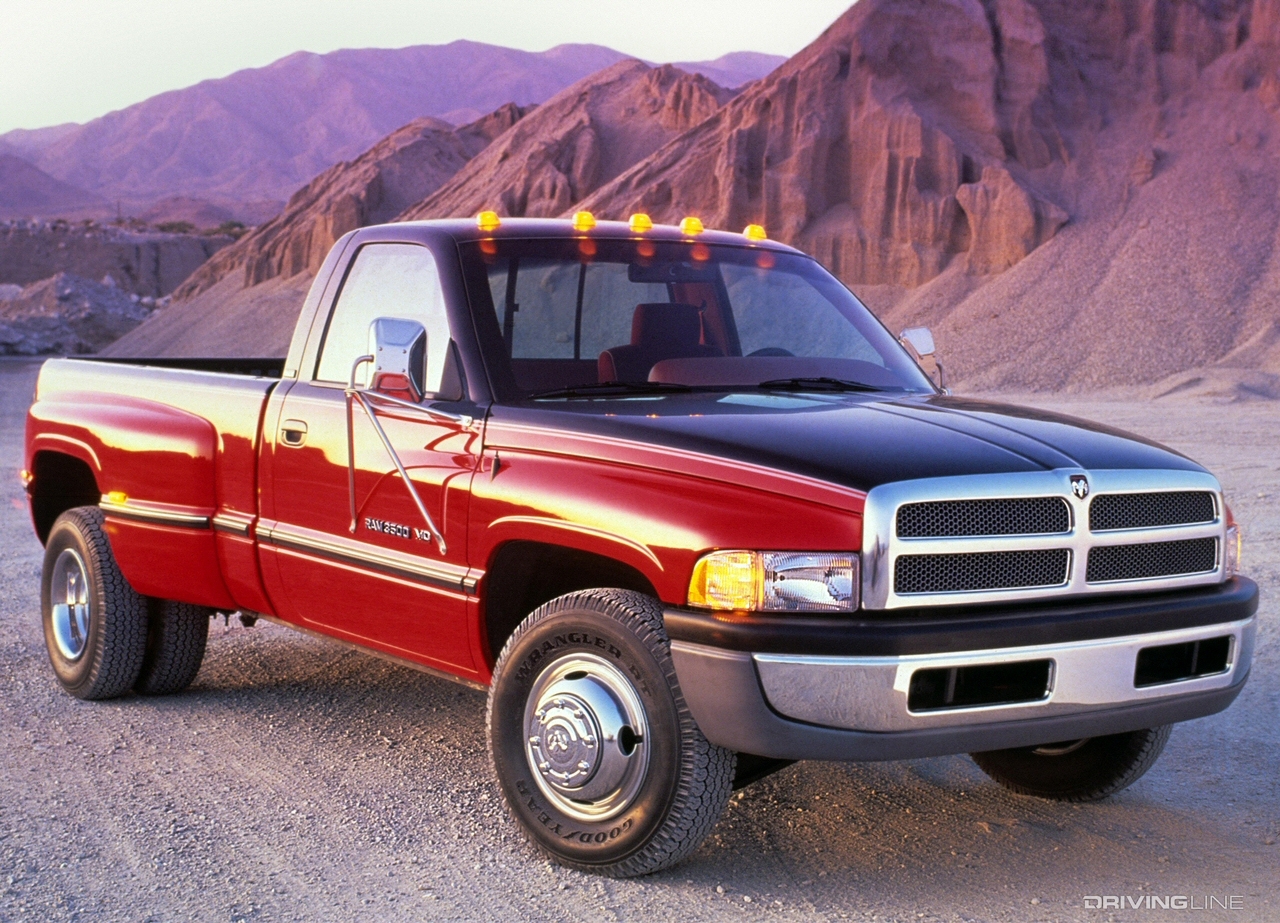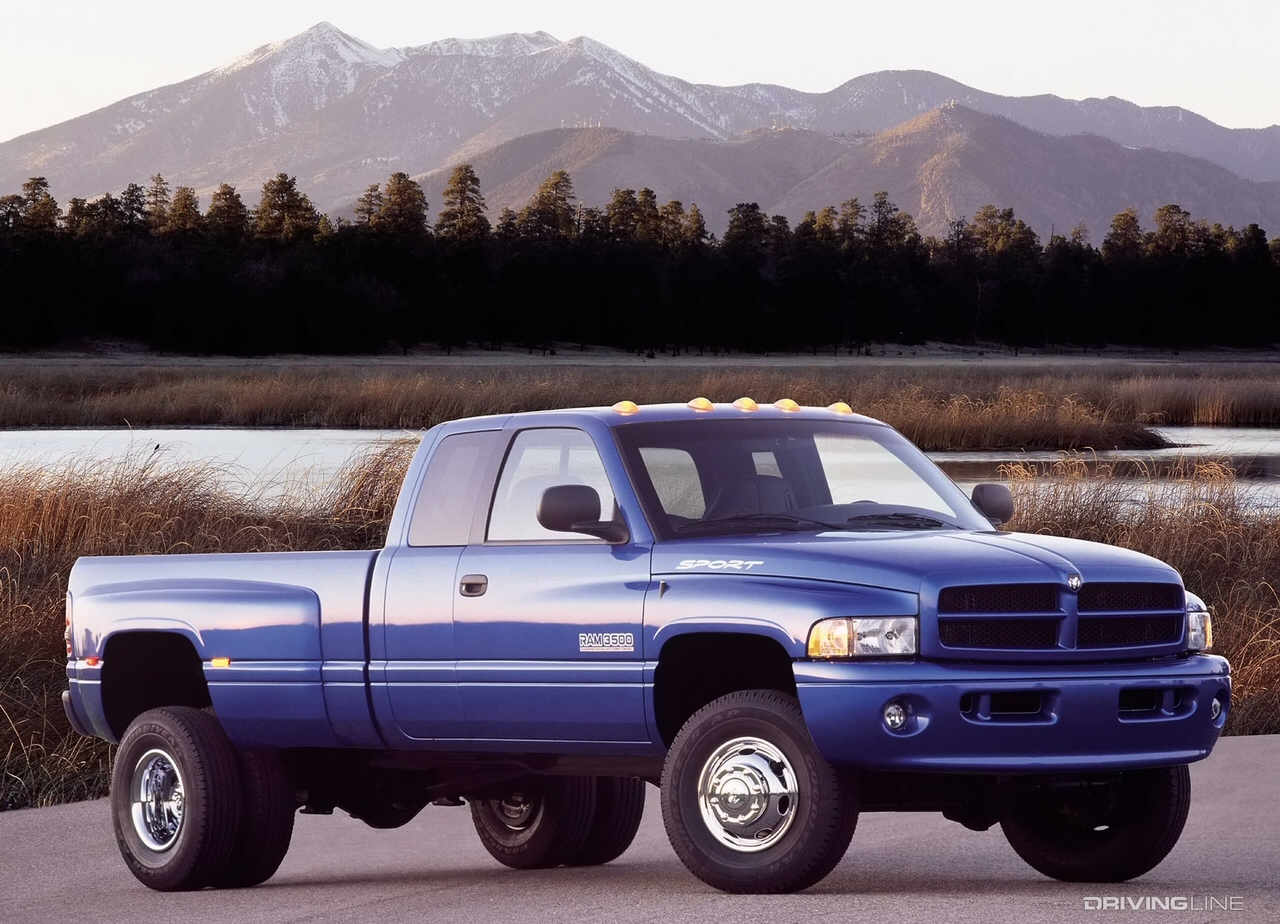The 1994 Dodge Ram changed the game for full-size pickups in America. Radically different from any other truck available at the time, it introduced concepts, styling, and engineering that are still making ripples in its segment today, and in fact is still one of the most significant vehicles of the past 30 years.

For parent company Chrysler, it was a long overdue win. A cascade of financial disasters had hobbled Dodge's truck division since the early 1980s, giving a scant, meager 7 percent market share among customers more attracted to the third-party Cummins diesel engine found in heavy duty models than the Dodge trucks themselves.

The second-generation Ram changed all of that—and it wasn't an accident. Dodge's transformation of its truck division from the island of misfit toys it had become to the strong-beating, profit-churning heart of the entire Chrysler empire was a conscious decision that centered around innovation, determination and a willingness to walk a different path.
No More Business As Usual
As with any revolution, real change came from a group of spirited outsiders seeking to shake up the status quo. Executive Bob Lutz had already made waves with the Dodge Viper, which would go from concept to production in just a handful of years. Unbeknownst to the general public, he had also turned his eye to the rest of Dodge's product in the late 1980s. Like AMC (then part of Chrysler) designer Phillip E. Payne, he was appalled at the lackluster designs for the next-generation Ram, code-named 'Phoenix,' to the point where he decided to take major action.

Lutz's solution was to transform the Ram truck division from Chrysler's backwater to a hub of passionate engineers and stylists eager to make a difference. He did this by insisting, in partnership with fellow Chrysler exec Francois Castaing, that those involved in the project Phoenix project abandon it entirely and instead question the current pickup truck. A six-month time limit was imposed on the design team to come up with something completely different.
Lead, Not Follow
Charged with leading the team, Payne looked at the derivative design of the would-be Dodge with fresh eyes. AMC had long been out of the pickup truck game, selling only ancient J Series and Cherokee-derived Comanches through its Jeep division at the time. Inspiration for the new look Ram came from an unlikely place: the Studebaker Transtar, a 50s-era truck with a bulky visage that gelled well with the brand's own Power Wagon past. Sprinkled in with these traditional, strong truck faces was a hint of 'big rig' design that would come to link the revised Ram with current 18-wheelers.

It was a complete break with what anyone had attempted in a modern truck, and it managed to both be style-forward while still evoking a sense of task-focused brawn that was so important to the more commercial-oriented customers Dodge hoped to court. The Ram didn't just look big, either. It also offered the largest single-cab interior in the industry, and was the only one at the time to offer a reclining front seat. Doors were enormous, which was more than a boast because it made it easier to get in and out of the pickup.

There were never any clay models built for the Ram, with its entire design being done inside a computer followed by model panels being cut from steel. When assembled, the team found a perfect fit that stunned industry insiders who had declared this type of design precision impossible.
How Many Cylinders?
Under that big hood, and ahead of its monster cabin, was a new drivetrain that would attract nearly as much attention. Although outfitted with returnless fuel injection, the entry-level V6 (which ruled the six-cylinder roost with its 175 horsepower), 318 cubic inch V8, and 360 cubic inch V8 'Magnum' motors were largely carried over from the previous truck (same, too, with the Cummins straight-six turbodiesel found in 2500 and 3500 models). On top of these, Dodge sensed that there was a need for a big-torque gas motor for customers who wanted to tow, but weren't interested in a diesel mill.

Enter the 8.0-liter V10, an engine that offered 300 horsepower and a whopping 450 lb-ft of torque, with the latter available from 1,000 rpm all the way up to 4,000 rpm—the sweet spot for anyone tugging a trailer. The steel block engine shared little with the Viper's aluminum V10 (which had been developed in collaboration with Lamborghini), but it did feature coil-on-plug ignition, which was quite advanced in the pickup world of the early-90s. It was a strong complement to the 420 lb-ft of torque on tap from the optional Cummins engine in heavy duty trucks (which also offered an available power take-off system direct from the factory).

Suspension for the Ram would include independent coil springs up front for two-wheel drive trucks, and a solid axle with a link-coil setup for four-wheel drive models. 3500 full ton pickups would use a live axle setup regardless. Rear suspensions featured a coil-link design.
Still Shaking Up The Industry
The effect of the second-generation Ram on Dodge's fortunes was almost instantaneous. Sales of the pickup tripled in the space of a single year, and then almost doubled the year after. Dodge went from selling less than 100,000 units to well over 400,000 in a very short period of time, which transformed its truck operations into a bread basket for the brand that continues to deliver, year after year, to this day.
The Ram would be mildly updated throughout its initial gen two run, including the installation of a set of rear-hinged doors on its extended Quad Cab model in 1998 that would mark the first time an automaker had offered that feature (which would soon become standard in the segment).

The Ram's influence would have major effects not just inside, but outside of Chrysler as well. After going it alone with a fluid-like look for the F-150 immediately in the wake of the Ram, Ford would eventually shift to the same big rig-inspired styling language still embodied by Dodge—as would GMC, Chevrolet, and even Toyota when it came time to produce a legitimate full-size version of the Tundra. Size-wise, post-Ram every brand decided that they, too, had to bulk up their pickups, launching a monster truck arms race that has yet to relax.
Also important, however, was the 1994 Dodge Ram team's decision to focus on its driver and passengers as much as its towing and hauling capabilities. In addition to its large, comfortable cab, the Ram also introduced a long list of equipment that had previously been the province of passenger cars, a move that forced everyone else in Detroit to finally get serious about building fully-featured pickups. That trend has also exploded to the point where luxury trucks now command huge dollars and routinely fill the coffers of Ford, General Motors, and Ram.

It's rare to be able to trace so many important elements of a current class of vehicle to a single model, but the Dodge Ram's place in history is undisputed. The factors that came together to make it the right truck at the right time can be linked to a company whose leadership realized that major change was needed to completely overhaul an underperforming product, and who were willing to take a huge risk in spending hundreds of millions of dollars to develop a vehicle unlike any other on the market. Given how risk-averse the corporate world in general, and automotive industry in particular, has become, it's a power move that may never be seen again.
Want to read more Ram? Check out our profile of the 2004-2006 Dodge Ram SRT-10 muscle truck.